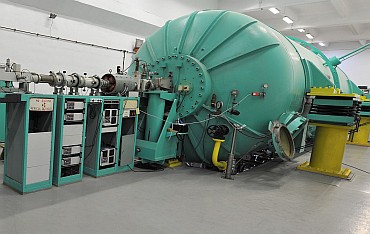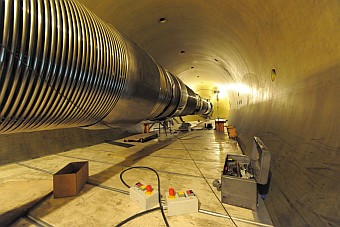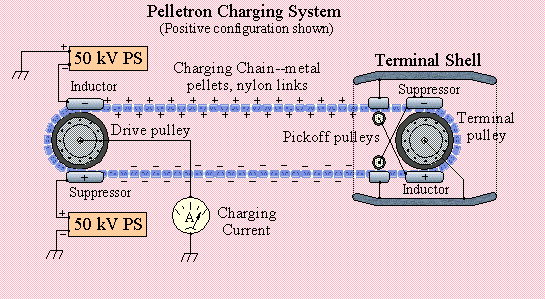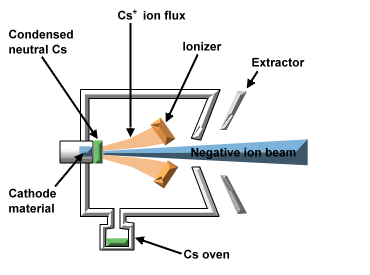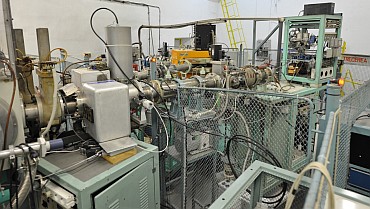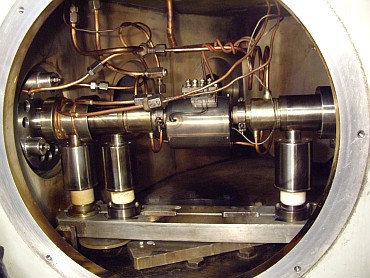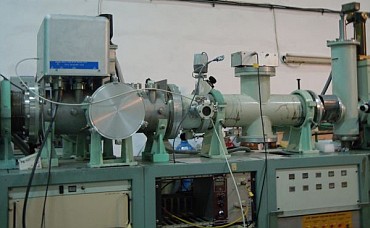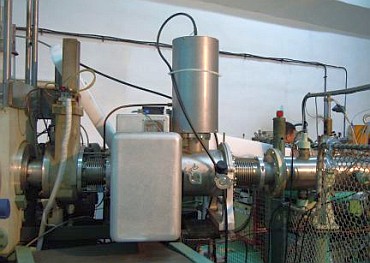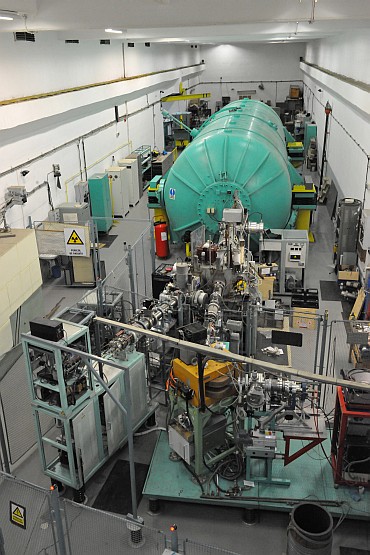
Description
The 9 MV FN Pelletron tandem accelerator was built by the High Voltage Engineering
Corporation (HVEC) in 1973 and it was later upgraded from the original terminal
voltage of 7.5 MV (FN machine) to 9 MV. The 9 MV tandem accelerator is presently
used for basic research, mainly for nuclear structure physics and nuclear reaction
physics.
The activity at the tandem accelerator is supervised by the Program
Advisory Committee, running at an average of 5500 hours per year. The original
configuration of the machine was upgraded starting with 2006. The charging belt was
replaced with a more reliable Pelletron system, new ion sources were installed and
all the vacuum system and power supply system were installed.
The operating principle of this type of machine is very simple. The high voltage
terminal of the accelerator is charged to maximum 9 million volts positive
potential. The negative ions from the ion sources are accelerated by the positive
potential on the terminal after a selection through the injection magnet (20 degrees
bipolar magnet).
